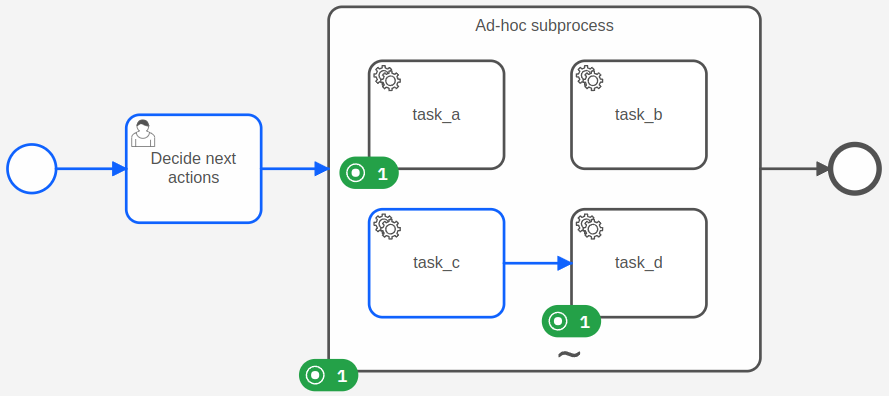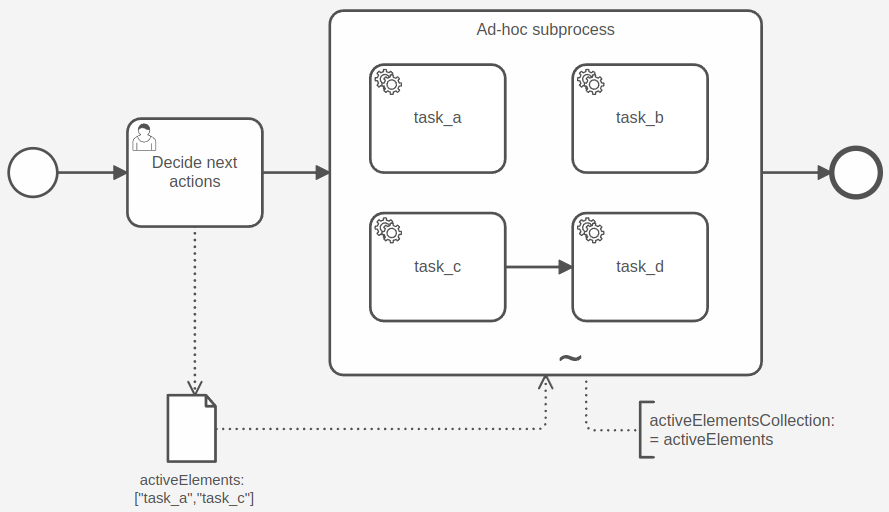Ad-hoc
The ad-hoc marker (represented by a ~ tilde character) is only available for embedded subprocesses, and are therefore called ad-hoc subprocesses. Compared to regular subprocesses, ad-hoc subprocesses allow more flexibility for executing inner elements.

The inner elements of an ad-hoc subprocess are not connected to a start or end event. Each element can be executed multiple times, in any order, or skipped.
If elements depend on each other, the elements can be connected by a sequence flow to build a structured sequence within the ad-hoc subprocess.
When a process instance reaches an ad-hoc subprocess, it activates the inner elements and waits for their completion. After the last element is completed, the process instance completes the ad-hoc subprocess and takes the outgoing sequence flows.
Constraints
An ad-hoc subprocess has the following constraints:
- Must have at least one activity
- Must not have start events or end events
- Any intermediate catch event must have an outgoing sequence flow
Activate an element
An ad-hoc subprocess can define an expression activeElementsCollection that should return a
list of strings. Each string in the list should match to an ID of
an inner element of the ad-hoc subprocess. Usually, the expression accesses a process instance variable that was
created before and holds the list of element IDs.

When a process instance reaches an ad-hoc subprocess, it evaluates the expression activeElementsCollection and
activates all elements whose element IDs are in the list.
If the list is empty or the expression is not defined, no element is activated and the ad-hoc subprocess remains active.
If the expression doesn't evaluate to a list of strings, or the list contains other values than inner element IDs, the process instance creates an incident.
Currently, it is not possible to activate elements dynamically after the ad-hoc subprocess is activated, only on entering the subprocess.
Variable mappings
An ad-hoc subprocess can define input and output variable mappings.
Input variable mappings are applied on activating the ad-hoc subprocess and before evaluating the expression
activeElementsCollection. They can be used to create local variables for the ad-hoc subprocess.
Output variable mappings are applied on completing the ad-hoc subprocess. They can be used to propagate local variables from the ad-hoc subprocess into the process instance. By default, no local variables are propagated.
Additional resources
XML representation
<bpmn:adHocSubProcess id="ad-hoc-subprocess" name="Ad-hoc subprocess">
<bpmn:extensionElements>
<zeebe:adHoc activeElementsCollection="=activeElements" />
</bpmn:extensionElements>
... more contained elements ...
</bpmn:adHocSubProcess>